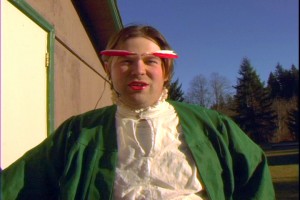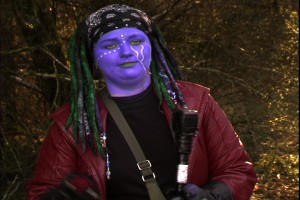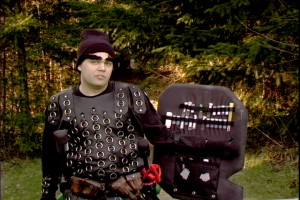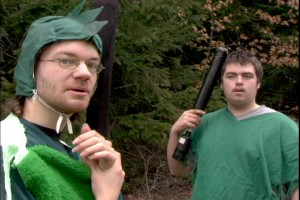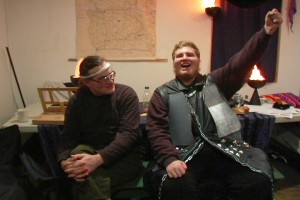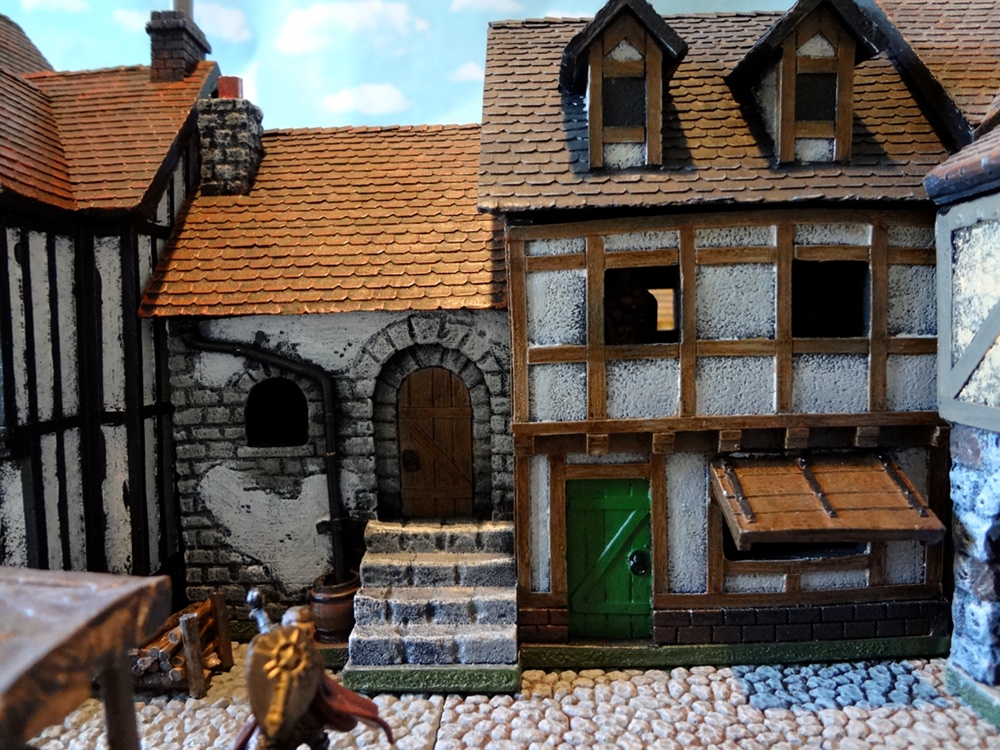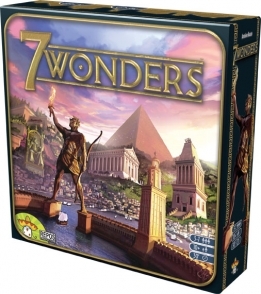Monster Camp: The World of Seattle NERO
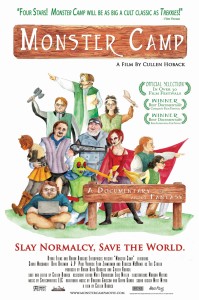 When I first saw Monster Camp years ago, I think I paused it and quickly Googled for more information about NERO, because I wanted to do what the NERO Seattle players do in the 2007 film. They run around tossing birdseed packets and wielding foam boffer weapons, laughing and enjoying themselves. On screen, friendships are formed and existing relationships reinforced. Director Cullen Hoback and his crew have given us an excellent, entertaining foray into LARPing, capturing the camraderie and storytelling potential of NERO, but ultimately Monster Camp leaves me wanting much, much more.
When I first saw Monster Camp years ago, I think I paused it and quickly Googled for more information about NERO, because I wanted to do what the NERO Seattle players do in the 2007 film. They run around tossing birdseed packets and wielding foam boffer weapons, laughing and enjoying themselves. On screen, friendships are formed and existing relationships reinforced. Director Cullen Hoback and his crew have given us an excellent, entertaining foray into LARPing, capturing the camraderie and storytelling potential of NERO, but ultimately Monster Camp leaves me wanting much, much more.
Questions and Questions
Monster Camp is frustratingly informative. The documentary uses text occasionally to explain the most basic of concepts, such as that D&D is short for Dungeons & Dragons, that WOW stands for World of Warcraft, and that WOW at only $14.99 a month is a “pretty sweet deal”. Any gamer watching should need no introduction to the terms of D&D and WoW, but from these explanations, it is clear that Monster Camp is targeting a wider audience. Boffers are explained as are the use of birdseed packets to represent spells like Fireballs and Lightning Bolts. Holds, pauses in the the game, “happen anytime there is a dangerous situation” the Master of Plot explains; in the example shown, it is when his glasses have fallen off. There are terms like phys-rep, short for physical representation and slain NPC monsters give up loot to their attackers. Hoback offers the most basic, tantalizing amounts of information in an entertaining package, but it’s just not enough.
“This is Shane”, white text on a black screen informs the viewers. Shane is Shane Macomber, the owner of the Seattle NERO franchise at the time of filming and an employee at Office Depot. His involvement in NERO began in March of 1998. Much of Monster Camp revolves around Shane, but Shane’s fondness for eyebrow decoration is never explained, though it is shared by other LARPers. When Shane has a sudden medical emergency in a battle later, no explanation is provided. Perhaps he was famished, had low blood sugar, and needs the cold pasta that someone inexplicably hands to him. While Shane’s thoughts on various aspects of NERO are recorded, ultimately the film’s main character remains a mystery. What does Shane feel when a PC “dies”? What are his plans for the future? Where did he see NERO taking him? Unlike other participants, such as the Vorvicks from Portland, Oregon or Fern Zimmerman, Shane’s home life goes largely unseen.
The Strega is introduced early on, a monster played by Becca one year prior. “She killed every player who fought her”, the viewer is informed. There is continued build up through the rest of Monster Camp and then there she is! Strega! Text reminds the viewer that “The Strega is the toughest creature most of them will ever face.” As she battles PCs, a Hold is called. Dave the Master of Plot is apprised by J.P. about the 480 damage he has dealt to her personally and Dave calls Becca over, where there is a mild confrontation with Becca getting upset. And then? Then, there is no resolution captured on screen. Shane has his medical emergency, so the camera follows him in for the odd pasta scene. The viewer has to imagine that outside the PCs killed the Strega, because Becca reveals that she is dead now. How many PCs did the Strega kill this time? What did Becca think of the battle? How did it compare to the last one? Was there actual cheating involved?
To the right is the last of the Sea Elves played by Cassandra Pearl. Through a powerful ritual, her race has been wiped out. She is quite shaken by this, but there is no commentary from any of the other LARPers. As a GM, I also wonder what Shane was doing in the first place casting the spell that magically destroyed her entire race. Was he taking on the roll of an NPC/monster sorceror? They make a point each time that Shane actually plays the game (instead of running it) when he is portraying an NPC, but his performance of the magical ritual gets little explanation.
I could go on and on, but where I think Hoback could have really illuminated NERO’s proceedings is by sticking with an entire encounter or fight from start to finish. Instead there are only glimpses. A monster is killed and turns over loot, but what the loot actually is remains a mystery. Was the fight worthwhile to the PCs? How many potions are players going through? Is this guy with a shield full of vials reasonable or is he even excessive by NERO LARP standards? What do non-Seattle LARPers think of Shane Macomber’s operation?
IC Politics Absent, OOC Politics Slightly Unexplored
Compared to Darkon or even the fictional The Wild Hunt, Monster Camp’s lack of in-character politics on screen is refreshing. The closest thing to politics between characters seems to be the in-game romantic relationships which occasionally spill out of game. The viewer meets J.P. and Holly, as well as Becca and Damien. The former pair met in game and have been together for 5 years, while Becca and Damien went out for over 2 years, at least as far as Damien sees it. From Becca’s and Hoback’s telling though, the pair were engaged. In what might be one of the most pointed moments in the documentary, another player questions Damien’s account of his relationship, “Weren’t you engaged? Briefly?” Damien considers, looking away and says, “No.” While Becca acknowledges that there’s “all kind of hostility there”, the viewer fortunately does not have to endure too much of it, either from their characters or out of character with the players. The topic of in game relationships could make for a documentary in of itself, but this is also another example of Monster Camp scratching the surface of a possibly deep subject.
Out of character though, there are more political battles between the staff. The latter third of the movie hinges on Shane’s surprise announcement that he will be taking a hiatus from Seattle NERO. Ultimately he sells the company to Dave, but there is conflict between the two arising in part from Dave’s no-show at the final event that Shane runs. There are undercurrents of discontent and politics that run through the behind-the-scenes talk on NERO, but they also remain unexplored. The transition in the NERO Seattle franchise ownership is also the closest that the documentary comes to having a narrative and anything approaching a climax. Hoback focuses on documenting rather than storytelling, which is fine, but again, I just wish he had documented more of the LARPers whether behind the scenes or at the events.
Capturing Gamers’ Good and Bad Sides
Monster Camp does do a great job in capturing the oftentimes dysfunctional and interesting lives of gamers. Something is amiss in many of the film’s subjects’ lives. Dave acknowledges that World of Warcraft can be addictive, but never quite admits that he has an addiction himself. As his eyes tear up and he explains that his (8 year old) daughter came to him about his problem, he explains his solution, that he will be putting together a PC for her use, so she can join him in Azeroth. Then there are the two friends, Carter and Brandon. Both play NPCs/monsters at NERO Seattle and both are still high school seniors. They spend their time playing World of Warcraft and LARPing. This leaves them little time for their studies. As a result, this is Carter’s fifth year as a high school senior and Brandon’s fourth! Both seem like nice guys and remind me of friends and gamer acquaintances, but there is no way that their lifestyle can be described as healthy. It would be wrong to think though that Monster Camp paints its LARPers in a negative light. Instead, they come across as decidedly human, despite some of their bizarre monster costumes.
The father and son duo, Steve and Paul Vorvick, seem better adjusted, while J.P. who plays Sir Trevor has clearly benefited from LARPing. Formerly shy and reserved, the make-believe world of LARPing allowed him to develop a more outgoing, flirtatious personality which he has taken with him out into the real world. Likewise, Val Anderson, another LARPer is confined to her wheelchair and has a caregiver, Eric, who joins her in game. Monster Camp does not dwell on her or her disability, but it also doesn’t shy away from the opportunities that LARPing gives her. As she says, “it’s a chance to ignore this for a little while, where in the reality world I can’t.” Above all, LARPing is about the community for NERO’s players, who oftentimes only connect with each other at the special events once each month, traveling from afar to do so.
Bonus Feature: Dragons are Real
One of the extras offered on the DVD is the short film Dragons Are Real which Hoback filmed at his first exposure to the Seattle LARP group at their summer event in July. It is the formative version of Monster Camp and actually has a number of more in-depth explanations not offered in the main film, while still featuring many of the same players. Indeed, probably a quarter of its footage or more made its way into Monster Camp. The importance of energy drinks in fueling the players and monsters is mentioned to explain the propensity for Plot to stage night time attacks on sleeping players. While Dragons are Real ends abruptly it does answer a few more questions I had about NERO and is definitely worth watching.
A “Monster Camp” of My Own
As I write this, in my 20 years of gaming, I have LARPed once and even that was without boffers or combat. However I feel comfortable in saying that Monster Camp is probably a must-see movie for those intrigued by the possibilities of live action role-playing. I know as I try to get some LARPing experience under my belt I will be referring back to what I have seen on screen. I also look forward to answering all of the questions I had while watching Monster Camp.
All images copyright and courtesy Hyrax Productions.

